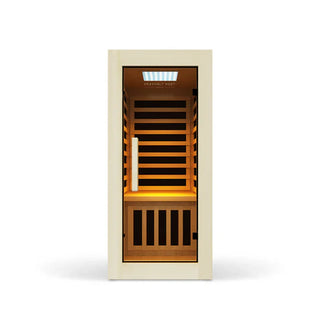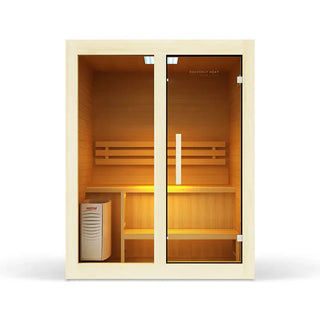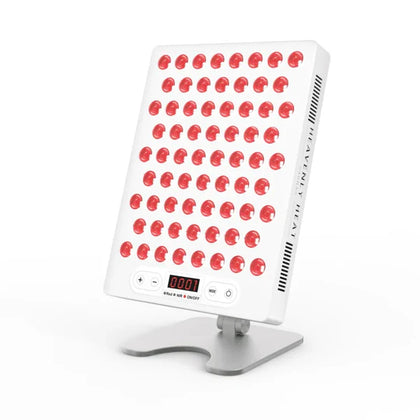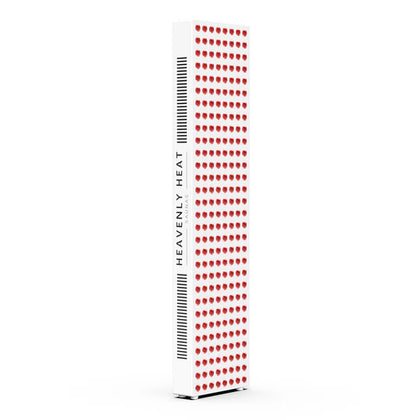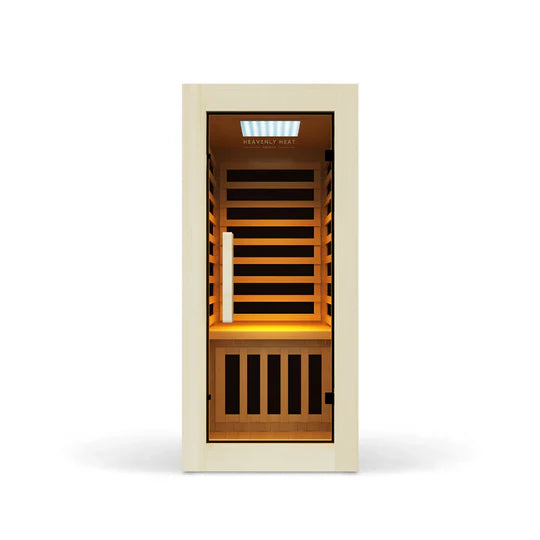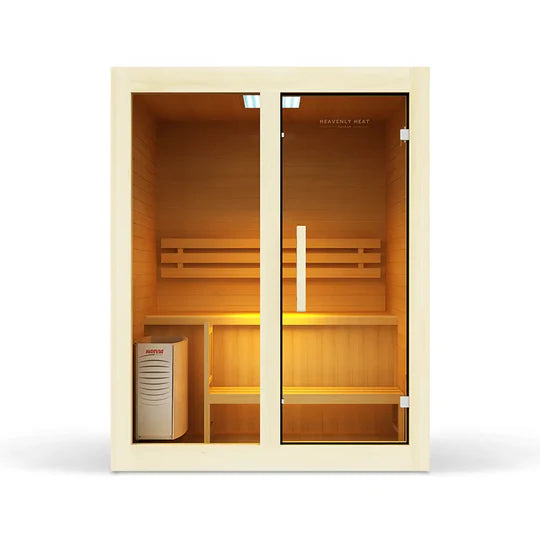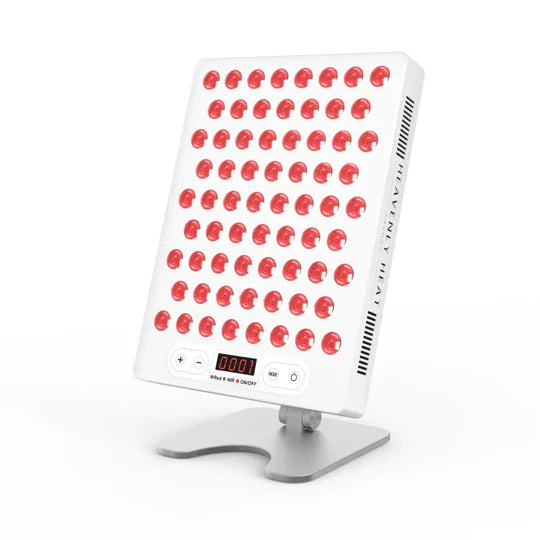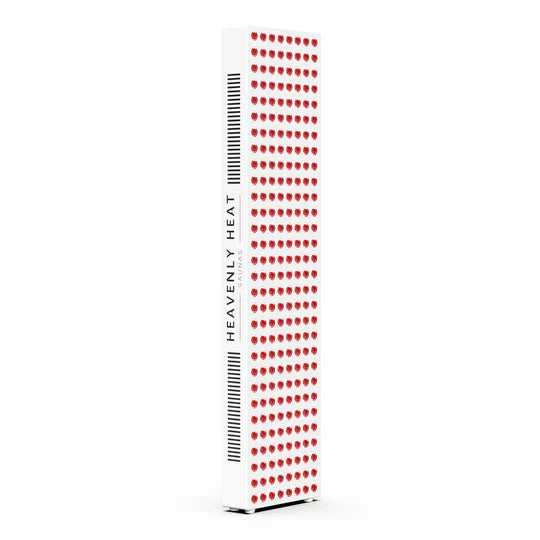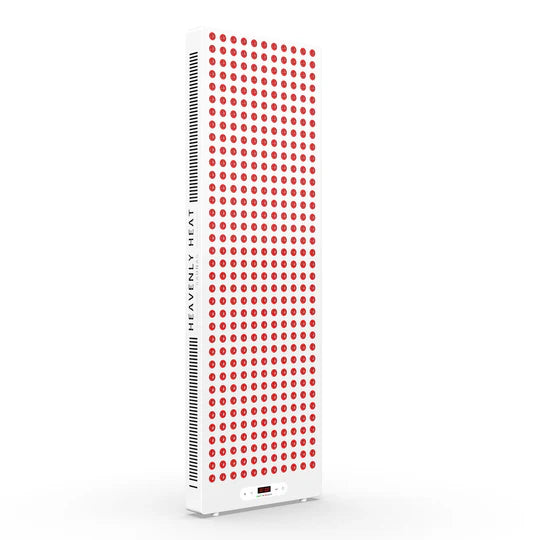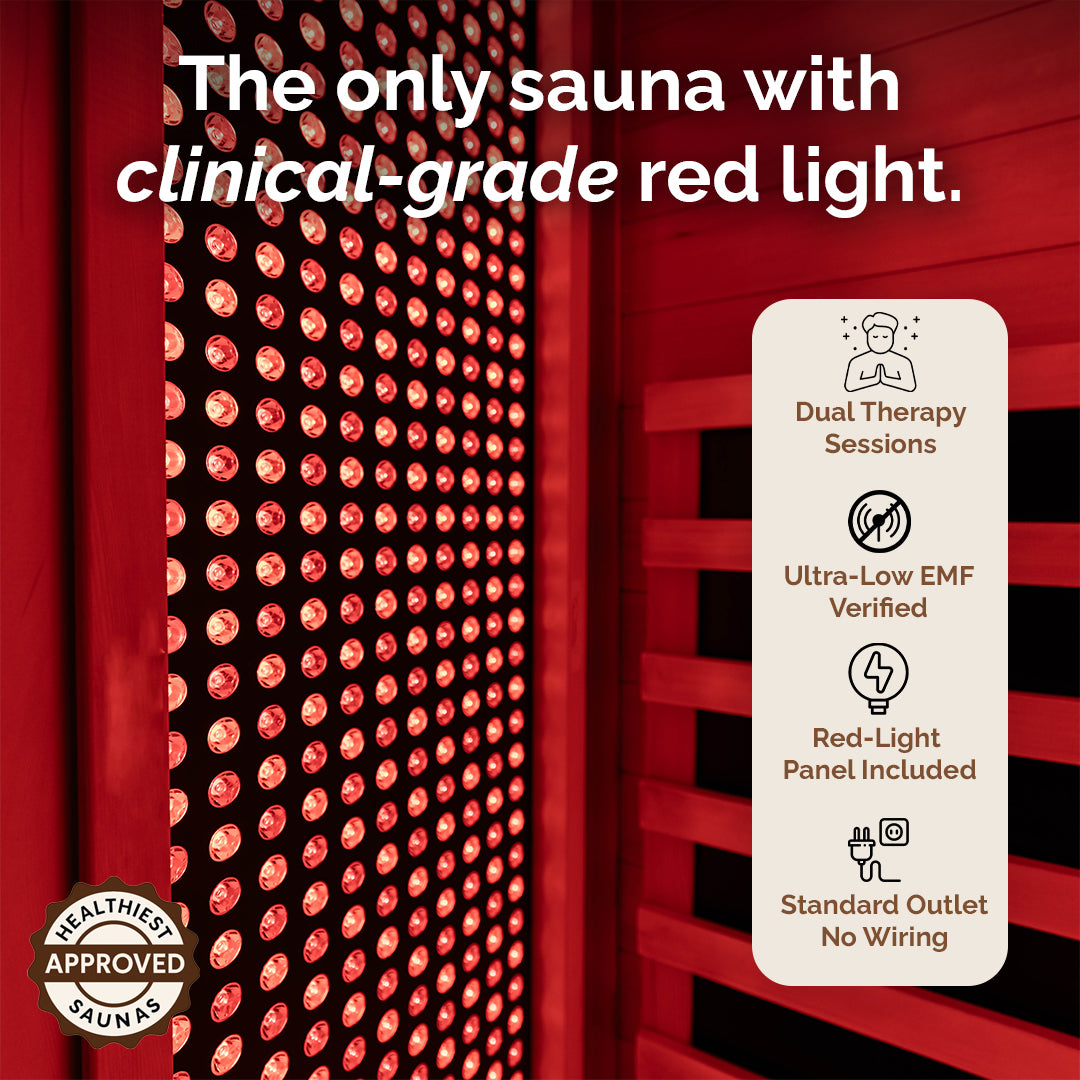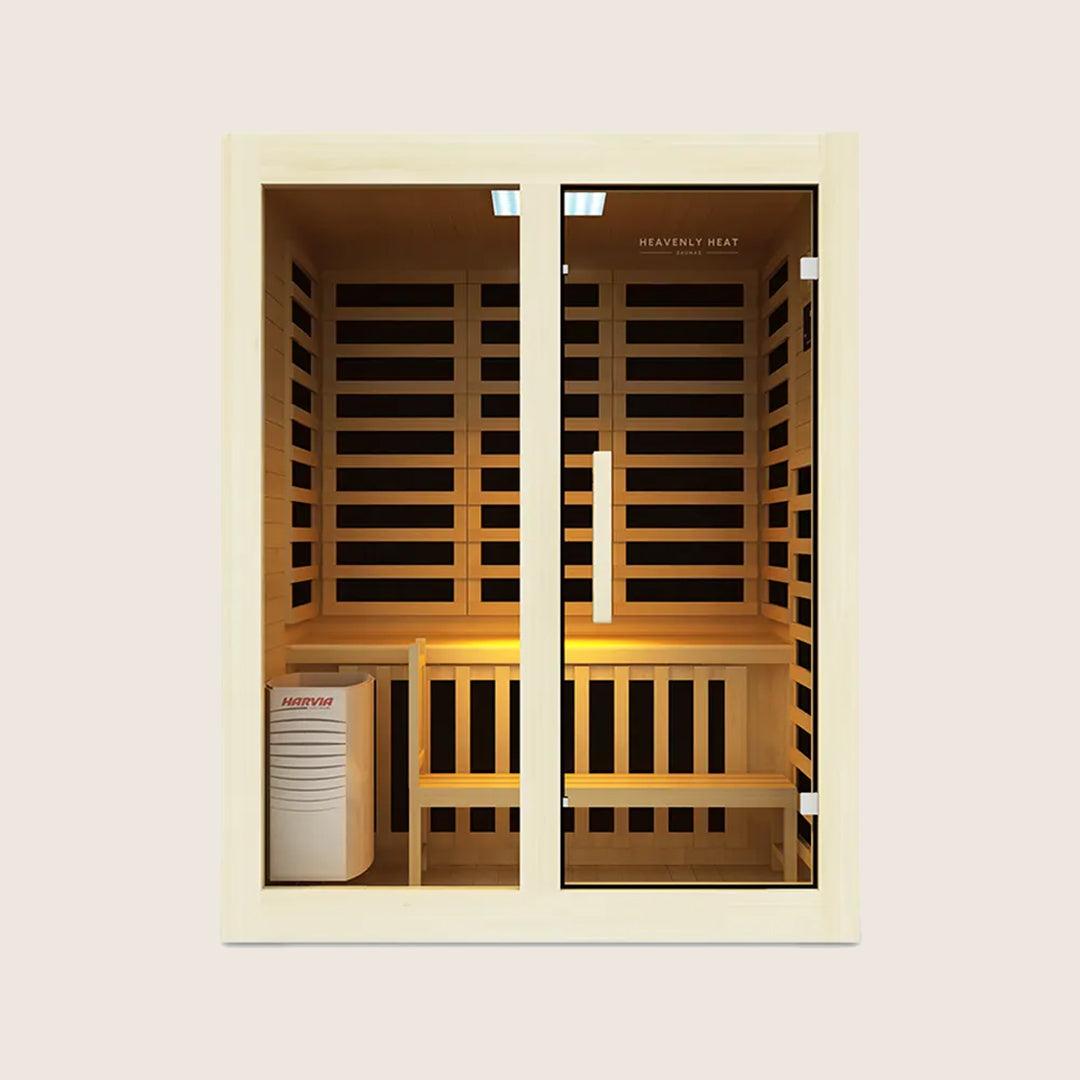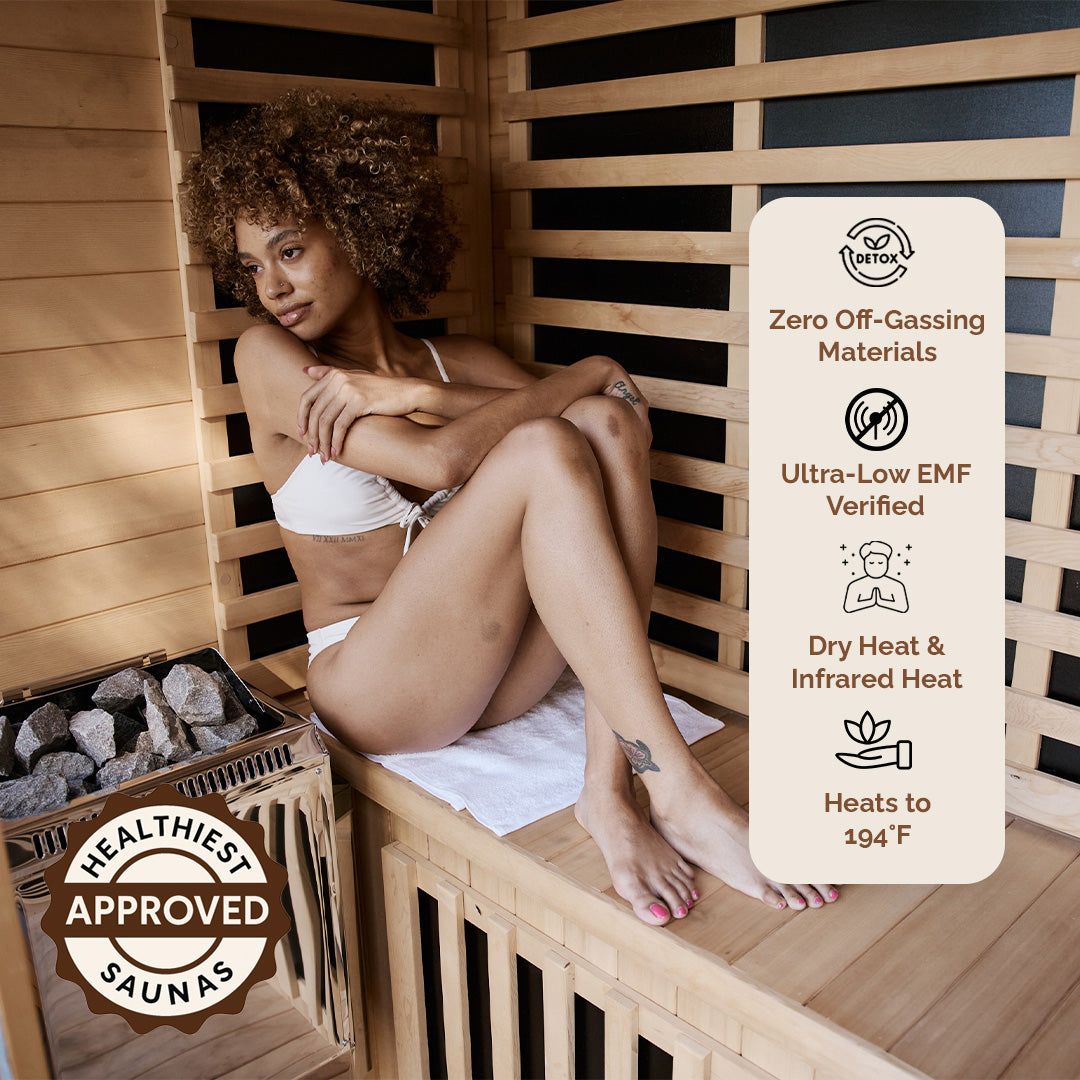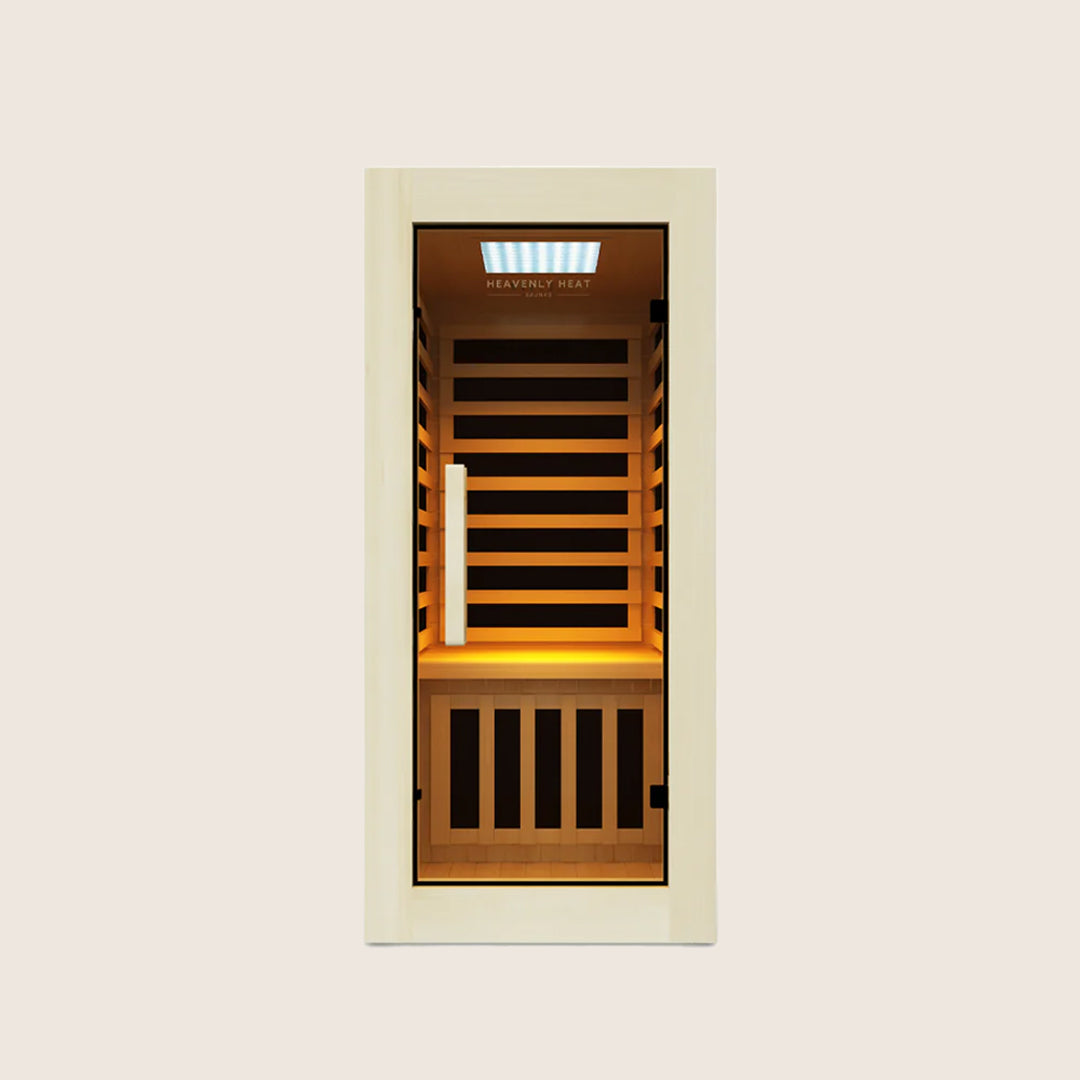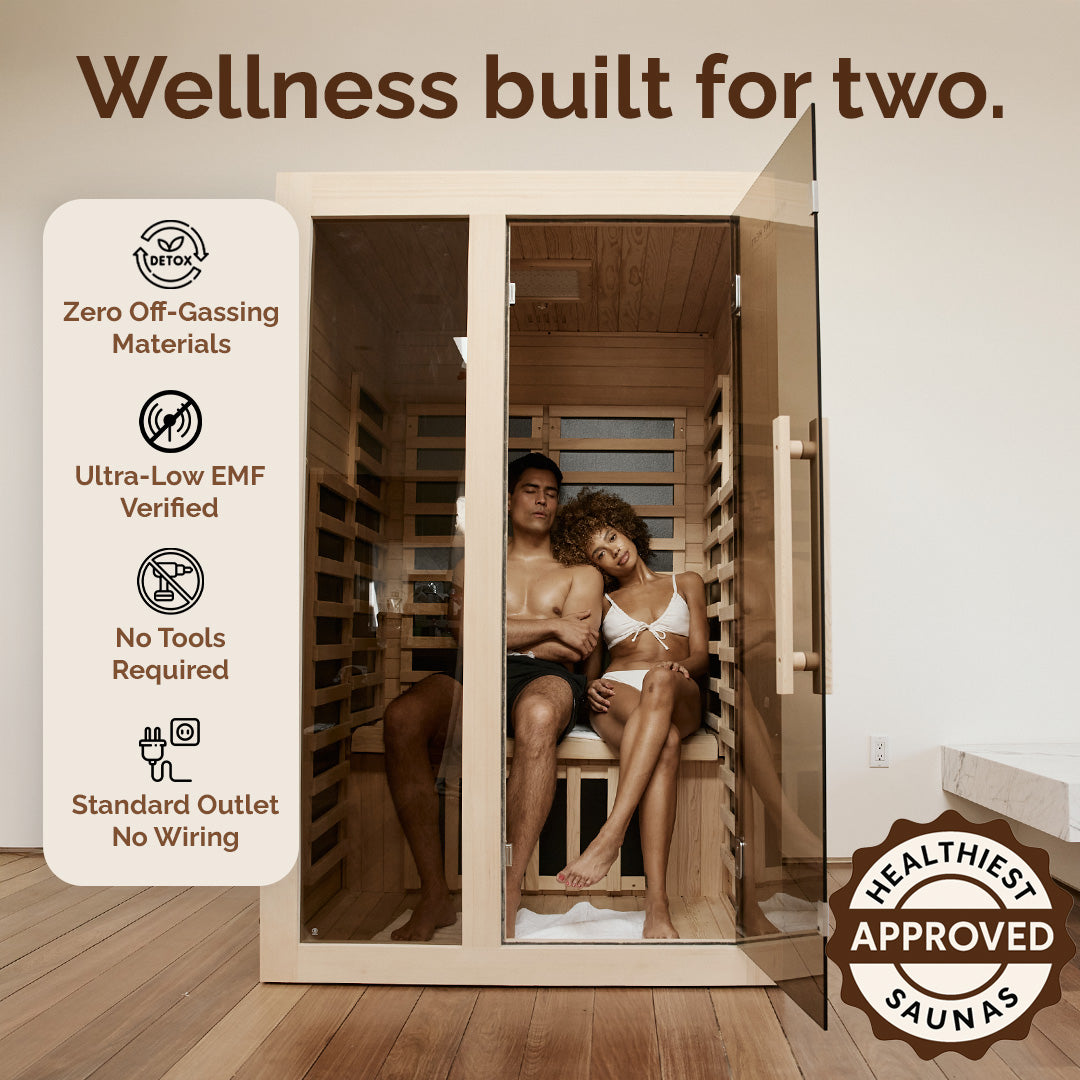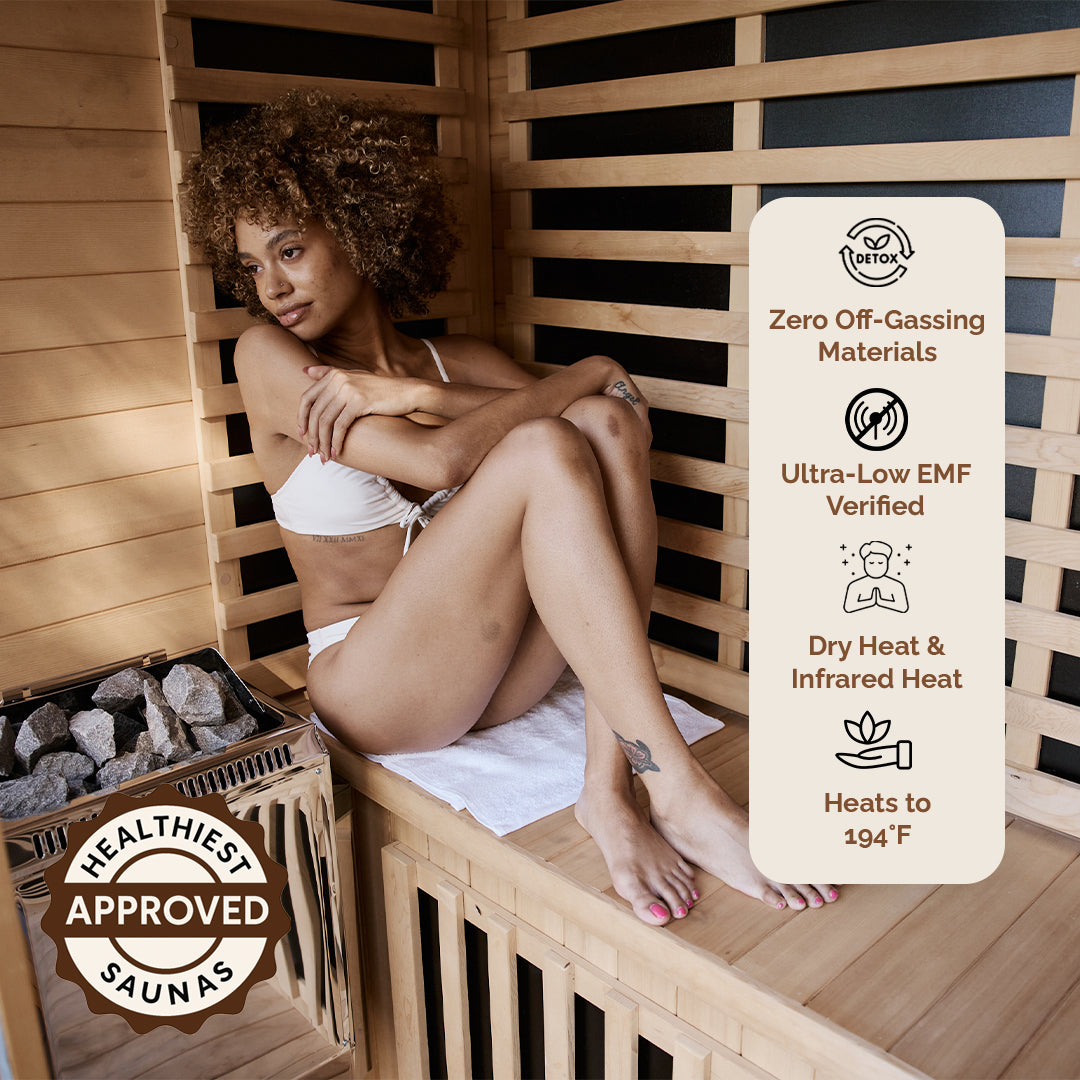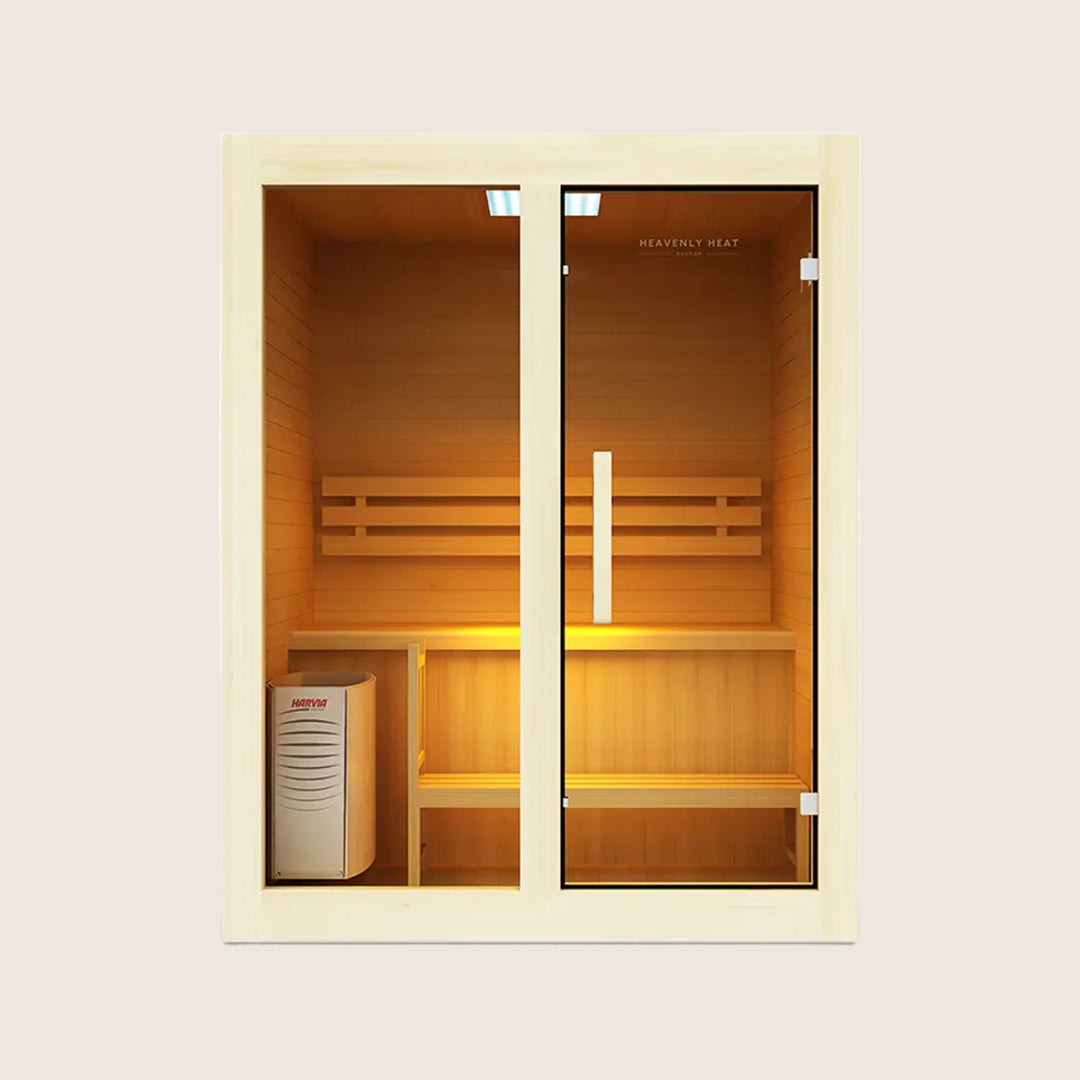Can You Use Red Light Therapy With Tretinoin?

Red light therapy offers benefits like smoother skin, fewer wrinkles, and a radiant glow, but can it work alongside tretinoin, the powerhouse for acne and aging?
The wrong combination could mean irritation, redness, and setbacks. If you’re using tretinoin, you need to know whether red light therapy is friend or foe.
Let’s dive into the science and uncover the safest way to use both together.
Overview of Red Light Therapy and Tretinoin
- Red light therapy works by using gentle light to heal your skin: Red light therapy uses low-wavelength red light that goes deep into the skin. It helps your body produce more collagen, speeds up healing, and reduces redness or swelling. That’s why it’s often used for wrinkles, acne, and damaged skin.
- Tretinoin helps your skin renew itself faster: Tretinoin is a strong form of vitamin A that makes your skin shed old cells more quickly. This helps treat acne, smooth out fine lines, and fade dark spots by revealing fresh new skin underneath.
- Red light therapy makes tretinoin easier on your skin: When both are used together, red light therapy helps calm the irritation or dryness that tretinoin might cause. It supports the skin barrier and makes the skin more able to handle tretinoin over time.
- Using both together can give you better results with less irritation: A good skincare routine that includes both treatments can lead to smoother, clearer skin. Red light soothes and protects while tretinoin does the deep work, together, they make your skin healthier without making it too sensitive.
Benefits of Red Light Therapy
Glowing, Healthier Skin
- Red light wakes up your skin cells and gives you a natural glow: Red light therapy boosts how your skin works by activating the cells deep inside . This extra energy helps your skin look fresher and more alive, especially when using the ideal wavelengths between 630 nm and 660 nm .
- Regular use fades dark spots and old acne marks: With continued use, red light therapy helps lighten acne scars and dark patches , giving your skin a smoother, more even look over time.
- It also calms down breakouts and clears your skin: According to Dr. Carmen Castilla , red light therapy can also treat active pimples and help with acne scars , making your skin clearer and healthier.
- Works even better when used with proven skincare like tretinoin: When you combine red light therapy with treatments like tretinoin , your skin gets better results, brighter, smoother, and more even-toned over time.
Faster Muscle Recovery & Repair
Red light therapy helps muscles recover by increasing ATP production in cells, reducing oxidative stress, and improving blood flow.
This process speeds up healing from microtears and reduces soreness, making it beneficial for athletes and active individuals.
Reduced Inflammation & Pain
Red light therapy lowers inflammation and relieves pain by penetrating tissues and reducing oxidative stress at the cellular level.
It is effective for conditions like joint pain, muscle stiffness, and autoimmune issues.
Many users experience noticeable relief after a few weeks of regular sessions.
Improved Blood Circulation
By promoting nitric oxide production, red light therapy helps dilate blood vessels and increase oxygen delivery to tissues.
This enhances cellular function, speeds up healing, and improves overall vitality.
Thicker, Stronger Hair
Hair loss and thinning can be improved with red light therapy, which stimulates dormant follicles and promotes hair regrowth.
Wavelengths between 630 nm and 680 nm enhance blood circulation to the scalp, energizing follicle cells.
Most people see initial signs of regrowth within three to six months with regular sessions.
Quicker Wound Healing
Red light therapy accelerates wound healing by improving blood circulation and reducing inflammation.
Wavelengths between 630 nm and 850 nm are most effective for healing injuries, burns, and post-surgical wounds, helping the body repair itself more efficiently.
Deeper, More Restful Sleep
Exposure to red light therapy before bedtime can help regulate sleep patterns by increasing melatonin production.
Unlike blue light, which disrupts the circadian rhythm, red light promotes relaxation and prepares the body for deep sleep.
Boosted Collagen for Youthful Skin
- Red light therapy helps your skin make more collagen: Collagen is the key to keeping your skin firm and youthful. Red light therapy naturally boosts its production, helping skin stay tighter and smoother.
- It makes your skin more elastic and reduces wrinkles: Studies show that red light therapy improves skin elasticity and reduces wrinkles by encouraging your skin to make more collagen and elastin.
- It works well with tretinoin to fight signs of aging: Red light therapy can boost the anti-aging effects of tretinoin while also helping your skin heal faster from any dryness or irritation it causes.
- Experts say LED masks help with collagen and breakouts: According to Dr. Alexis Granite , LED masks are great for building collagen, calming the skin, and even improving acne.
- Red light can reduce irritation while smoothing your skin: Using red light therapy with tretinoin may help improve skin texture, support healing, and lower irritation, making your skincare routine more comfortable.
- Light therapy helps your skin rebuild itself faster: Dr. Praveen Arany explains that light treatments not only boost collagen but also help your skin renew its deeper layers more quickly.
- NIR light gives your skin energy to heal and look better: Near-infrared (NIR) light creates a gentle stress inside your skin cells that boosts energy, encourages collagen production, and speeds up repair, especially helpful for aging or damaged skin.
Better Mood & Mental Clarity
Red light therapy can enhance cognitive function and emotional well-being by boosting serotonin and dopamine while lowering cortisol levels.
Many users find it helpful for managing anxiety, depression, and brain fog.
Stronger, More Flexible Joints
By increasing synovial fluid production, red light therapy helps lubricate joints and enhance mobility.
Some research suggests it may also support cartilage regeneration in conditions like osteoarthritis.
Many users report improvements in joint flexibility within a few weeks of regular therapy.
What Is Tretinoin and How It Works
- Tretinoin helps clear old skin and brings out fresh skin: Tretinoin is made from vitamin A and works by speeding up how quickly your skin renews itself. It removes dead skin cells and makes way for smoother, fresher-looking skin.
- With time, it reduces wrinkles, dark spots, and fine lines: By boosting collagen, tretinoin softens wrinkles and fades dark spots, making your skin look younger and more even-toned over time.
- Studies show it makes your skin smoother and brighter: Research proves that tretinoin improves skin texture, fades pigmentation, and adds a healthy glow to the face, especially with regular use.
- Your skin may feel dry and irritated at first: Many people experience dryness, peeling, or sensitivity when they first start using tretinoin. This is a normal reaction as the skin adjusts.
- Using it the wrong way can cause more harm than good: Tretinoin needs to be used the right way. Applying too much or too often can irritate your skin and slow down your progress.
- Doctors say tretinoin should be used under guidance: Dr. Hadley King explains that tretinoin can be very strong, which is why it's not sold over the counter. A doctor helps guide how and when to use it safely.
- Starting slowly gives your skin time to get used to it: According to Dr. Bobby Buka , using tretinoin gradually, like every other night at first, can help reduce irritation while still giving results.
- New formulas are made to be gentler on the skin: According to a study , Some tretinoin products use special technology or include soothing ingredients like omega-9 and glucosamine to make them less irritating.
- Lower strength and spaced-out use keeps skin calmer: Choosing a lower concentration or using tretinoin every other night gives your skin a chance to adjust without getting too red or dry.
- Mixing it with moisturizers keeps your skin comfortable: Using hydrating creams along with tretinoin helps prevent dryness, supports your skin barrier, and makes it easier to stick to the routine.
- With patience, tretinoin makes skin firm and even: If used regularly and correctly, tretinoin transforms the skin, making it firmer, smoother, and more even in tone.
- Adding red light therapy makes tretinoin work even better: Many users pair tretinoin with red light therapy to reduce irritation and boost results, speeding up healing and collagen production.
Potential Side Effects of Tretinoin
Dry & Flaky Skin
- Tretinoin dries out your skin in the beginning: When you start using tretinoin, it's common for your skin to become dry and flaky. This happens because tretinoin speeds up how fast your skin sheds old cells and makes new ones.
- A good moisturizer can stop the dryness from getting worse: According to a study , Using a moisturizer with ingredients like ceramides and hyaluronic acid helps lock in hydration and calm the dryness caused by tretinoin.
- Moisturizers make it easier to stick with tretinoin: Many people quit tretinoin because of irritation and dryness. Moisturizers with ceramides reduce these problems, making it easier to keep using tretinoin without giving up.
- Moisturizing keeps your skin barrier strong and healthy: When you use tretinoin with the right moisturizer, it helps your skin stay strong and balanced, so you can follow your routine without damaging your skin.
Redness & Irritation
Mild redness, irritation, and sensitivity are common when starting tretinoin. If irritation becomes severe, reducing frequency or switching to a gentler formula can help.
Soothing moisturizers with niacinamide and Centella Asiatica can ease discomfort.
Peeling & Shedding
Peeling is a normal reaction to tretinoin as it removes old, damaged skin. This effect usually lasts a few weeks and gradually lessens as the skin adapts.
Using a gentle cleanser and a heavier moisturizer at night can help manage excessive shedding.
Extra Sun Sensitivity
Tretinoin makes the skin more sensitive to the sun due to its exfoliating effects. Using a broad-spectrum sunscreen with SPF 30 or higher daily is essential to prevent sunburns and premature aging.
Burning or Stinging Sensation
A mild burning or stinging sensation can occur when first using tretinoin, as the skin barrier adjusts.
Applying tretinoin on completely dry skin and following up with a moisturizer can reduce discomfort.
Temporary Breakouts
Some users experience an initial breakout, known as the "tretinoin purge," where blemishes come to the surface faster.
These breakouts typically last a few weeks to a couple of months. Keeping the skin hydrated and avoiding additional harsh acne treatments can help.
Skin Darkening or Lightening
Tretinoin may cause temporary pigmentation changes, often due to irritation or sun exposure. Daily sunscreen use can help prevent unwanted skin tone variations.
More Sensitive Skin
Tretinoin can make the skin more reactive to skincare products that previously caused no irritation.
Using a simple, fragrance-free routine with minimal active ingredients can help minimize discomfort.
Itchy Skin
Itchiness can occur due to increased dryness. Hydrating moisturizers with colloidal oatmeal and shea butter provide relief, while reducing tretinoin application frequency may also help.
Using Red Light Therapy and Tretinoin Together
Red light therapy and tretinoin can be combined for optimal skin benefits. Red light therapy helps calm irritation and boosts collagen production, while tretinoin accelerates skin renewal.
For best results, use red light therapy first, then wait 10–20 minutes before applying tretinoin. This routine can improve skin texture and tone while minimizing irritation.
Best Practices for Combining Both
Understand Each Product’s Benefits
- Red light therapy helps your skin look younger and healthier: Red light therapy boosts collagen, reduces inflammation, and improves skin elasticity. It’s a gentle but powerful option for anti-aging and improving overall skin health.
- Tretinoin clears pores and smooths fine lines: Tretinoin, a vitamin A-based treatment, speeds up skin cell turnover. It’s well-known for treating acne and signs of aging like fine lines and rough texture.
- Using both together can give better results, but be careful: Red light therapy and tretinoin each work well on their own, but when combined correctly, they can improve skin even more. Just be mindful of how your skin reacts.
- Red light can reduce the irritation from tretinoin: According to Dr. Greg Hammer , red light helps with redness, acne, and fine wrinkles by energizing skin cells. This makes it a great partner for tretinoin, which can sometimes irritate the skin at first.
- Combining them may speed up healing and reduce redness: When used together, red light therapy may support skin repair and help calm the dryness or irritation that tretinoin sometimes causes.
- Start slow if your skin is sensitive: If you have sensitive skin, begin with low doses of tretinoin and short red light sessions. Let your skin get used to the routine before doing more.
- You’ll need sunscreen every day: This combination can make your skin more sensitive to sunlight, so it’s important to wear sunscreen daily to protect your skin from damage.
- It’s gentler than harsh treatments like peels, but takes time: Compared to chemical peels, using tretinoin with red light therapy is easier on the skin. But it’s not a quick fix, you’ll need to be consistent.
- Start with low strength and short sessions to stay safe: To avoid side effects, begin with lower concentrations of tretinoin and short red light sessions. Increase gradually as your skin builds tolerance.
Set Clear Skincare Goals
- Start by knowing what you want to fix: Before combining red light therapy and tretinoin, take a moment to decide what you’re hoping to improve, whether it’s acne, fine lines, or rough skin texture. Being clear about your goal makes everything else easier.
- Your skin type matters more than you think: Oily, dry, or sensitive, your skin type affects how treatments work for you. Knowing this from the start helps you avoid unwanted reactions and choose the right plan.
- Keeping track helps you see what’s really working: Writing things down in a journal, taking before-and-after photos, and noticing any skin changes can show you if your routine is helping or needs a tweak.
- Check in with your skin goals every few months: Your skin changes with time, seasons, and habits, so your goals should too. Reassess every few months to make sure you’re still moving in the right direction.
Maintain a Balanced Routine
- Always start with clean, dry skin: Using red light therapy on clean skin helps it work better and keeps your skin from getting irritated when you apply tretinoin afterward.
- Use red light before tretinoin and give your skin a short break: If you’re using both at night, do red light therapy first. Then wait 10–15 minutes before putting on tretinoin to keep your skin calm.
- Don’t rush tretinoin, take it slow and steady: Start using tretinoin just a few nights a week and see how your skin reacts. This helps avoid redness, dryness, or peeling.
- Keep your skin happy with a gentle moisturizer: Using a moisturizer helps your skin stay hydrated and protected while you're using strong treatments like tretinoin.
- Say no to scrubs and strong products while adjusting: Avoid harsh exfoliants or strong ingredients so your skin doesn’t get overwhelmed while you're using red light therapy and tretinoin together.
- A simple, steady routine works best in the long run: You don’t need a complicated routine. Doing just a few steps consistently helps your skin stay healthy without extra stress.
Ensure Product Compatibility
- Some ingredients can make your skin more sensitive: Not all skincare products pair well with tretinoin and red light therapy. Check ingredient labels for potential irritants like alcohol or strong acids, which may worsen sensitivity.
- Look for products that mention they're safe with tretinoin: When shopping online, research brands that specifically state compatibility with tretinoin use. These are more likely to be gentle and designed for sensitive skin.
- Test new products before using them fully: Conduct patch tests before introducing new products into your routine. This helps you avoid unexpected reactions or irritation.
- Too many strong ingredients can do more harm than good: While tretinoin and red light therapy work well together, using other strong actives like benzoyl peroxide at the same time may cancel out the benefits or irritate your skin.
- Gentle and non-pore-clogging products are your best bet: Prioritize gentle, non-comedogenic products to maintain balance and avoid irritation. These work better alongside tretinoin and red light therapy.
Prioritize Effectiveness
- Using tretinoin on dry skin helps avoid irritation: Effectiveness in skincare comes from consistency and proper application. Applying tretinoin on dry skin helps minimize irritation , which makes it easier to stay consistent with your routine.
- Red light works better when your skin is clean and dry: Red light therapy gives better results when used on clean, dry skin . This allows the light to fully absorb and work properly, improving its overall effect.
- Using them at different times prevents skin stress: Time management plays a big role in getting the best results. Using red light therapy in the morning and tretinoin at night helps your skin stay balanced and avoids overloading it.
- You need to stick with it to see real results: Long-term success needs patience and consistency. Tretinoin takes weeks to show visible changes, and red light therapy can take months , but both are worth it if you keep going.
Test and Adjust as Needed
Monitor your skin’s reaction and make adjustments accordingly. If irritation occurs, reduce tretinoin use or shorten red light exposure.
Measuring progress through photos or a skin diary helps determine what’s working.
If redness or peeling increases, focus on hydration and recovery before resuming full use.
The best skincare routines are flexible, adjusting frequency or products based on skin needs prevents unnecessary damage.
Choose the Right Skincare Tools
- Using the right skincare tool makes a big difference: Not all red light therapy devices are the same. Choosing FDA-approved tools with the correct wavelength (630–850nm) ensures you get real results safely.
- A tool that lets you adjust settings can better suit your skin: Some skincare tools let you change the intensity or settings, which helps you customize treatments based on your skin type or needs.
- Keeping your tools clean helps avoid breakouts: When tools aren’t cleaned properly, they can gather bacteria, this can lead to breakouts or skin irritation. Clean tools are safer and more effective.
- The right tools help your skincare products work better: Using skincare tools the right way helps your creams and serums go deeper into the skin, making them more effective and improving skin health over time.
Monitor Your Skin’s Progress
- Taking photos helps you see real progress: Tracking your skin with photos under the same lighting helps you notice real changes over time, not just what you feel or think.
- Writing things down shows what’s working: Keeping a simple log of what you’re using and how your skin reacts makes it easier to see what’s helping and what’s not.
- Redness or burning means your skin might be reacting: Dr. Annie Liu , a board-certified dermatologist, advises, "If you notice redness, burning, or irritation around your eyes or face, it could mean something isn’t right with your routine.
- Always follow the instructions to avoid problems: Since you’re using these devices on your own, it’s important to stick to the instructions and ask a professional if something feels wrong.
- The right skincare tools can prevent skin issues: Using tools that suit your skin type helps you avoid irritation and get the best results from your sauna and skincare routine.
Stay Flexible with Your Routine
- Sometimes your skin needs something different than usual: While consistency is key, flexibility allows you to adapt to your skin’s changing needs. Some days, your skin may need extra hydration rather than an active treatment.
- Being too strict with your routine can hurt your skin: Being too rigid can lead to unnecessary stress and irritation. Listening to what your skin needs each day helps you avoid overdoing it.
- Things like weather and stress can change what your skin needs: Unexpected factors like weather changes or stress can impact skin health. Adjusting your routine by increasing hydration or reducing active ingredients when needed prevents setbacks.
- Making small changes daily helps more than a perfect routine: Small, daily modifications create long-term improvements while keeping your skin balanced and healthy.
Seek Expert Advice When Needed
- It’s best to see a dermatologist when things get worse: When in doubt, consult a dermatologist. If you experience persistent redness, excessive peeling, or worsening skin conditions, professional guidance is essential.
- A skin expert can guide you based on what your skin needs: Experts can tailor recommendations based on your skin’s specific needs. What works for one person may not work for you.
- Make sure you’re getting advice from the right kind of expert: Choosing the right expert is important, look for board-certified dermatologists with experience in tretinoin and red light therapy.
- It’s okay to ask more than one expert for advice: Seeking multiple opinions can provide a well-rounded approach, especially if conflicting advice arises.
Can Red Light Therapy Enhance Tretinoin’s Effects?
- Tretinoin helps your skin renew itself faster: Tretinoin works by speeding up how quickly your skin cells turn over. This helps improve skin texture, smooth out wrinkles, and fight acne.
- Red light therapy works deeper in your skin: Unlike tretinoin, red light therapy goes deeper, helping your skin heal by boosting collagen and calming inflammation.
- Using both together may give better results: When combined, tretinoin and red light therapy may work even better, treating skin from the surface and below while reducing irritation.
- Red light therapy can make your skin firmer and healthier: Research shows red light therapy increases collagen, elastin, and moisture in the skin, which supports and enhances the anti-aging effects of tretinoin.
- It may also help your skin handle tretinoin better: By calming inflammation and supporting skin repair, red light therapy may reduce the dryness or peeling that tretinoin can sometimes cause.
- Start slowly to avoid skin sensitivity: If you're new to red light therapy, start by using it every other day. This gives your skin time to adjust and lowers the risk of irritation, especially if your skin is sensitive.
When to Space Out Treatments
- Give your skin a break, wait 6 to 12 hours between treatments: Spacing out red light therapy and tretinoin is key to avoiding irritation and getting the best results. Ideally, wait at least 6 to 12 hours between treatments to prevent skin sensitivity.
- Using both on the same day is okay, but only if your skin is fine with it: You can use them on the same day, but only if your skin handles it well. If not, it’s better to use them on alternate days to keep your skin calm.
- If your skin looks irritated, you’re doing too much too soon: Redness, dryness, or peeling is your skin’s way of telling you to slow down. Space out the treatments more if you notice any of these signs.
- Sensitive skin needs extra care, use them on separate days at first: If you have sensitive skin, start slowly. Try red light therapy two to three times a week and tretinoin on different nights to avoid overloading your skin.
- Watch how your skin reacts and adjust as needed: Let your skin guide you. If there’s no irritation, you can slowly increase how often you use each one, but only if your skin stays calm.
Optimizing Your Skincare Routine
Understanding Your Skin Type
Your skin type is the foundation of your skincare routine. The main types include oily, dry, combination, normal, and sensitive skin.
Identifying your skin type depends on factors like sebum production, hydration levels, and sensitivity.
External elements such as climate, hormones, and age can cause shifts in your skin type over time.
The Importance of Cleansing
Cleansing removes dirt, oil, and impurities that accumulate throughout the day. Washing twice a day keeps skin fresh, but over-cleansing can strip natural oils and damage the skin barrier.
Always cleanse before applying treatments to ensure active ingredients work effectively.
Exfoliation
Exfoliation removes dead skin cells, promoting a radiant complexion. There are two types: physical (scrubs or brushes) and chemical (acids like AHAs and BHAs).
Choosing the right method depends on your skin type, sensitive skin benefits from mild chemical exfoliants, while oily skin may tolerate stronger ones.
Toning: What It Does for Your Skin
Serums deliver concentrated ingredients deep into the skin, while moisturizers lock in hydration.
Even oily skin needs moisture to maintain balance.
Daily SPF prevents premature aging and protects against UV damage, making it a non-negotiable step in any routine.
Serums & Treatments
Serums deliver concentrated ingredients deep into the skin, while moisturizers lock in hydration.
Layering serums correctly ensures maximum benefits, apply water-based serums before oil-based ones.
Using multiple serums is possible but should be done cautiously to avoid irritation.
Moisturizers
A good moisturizer locks in hydration and protects the skin barrier. Selecting the right one depends on your skin type, gel moisturizers work well for oily skin, while creams provide deeper hydration for dry skin.
Morning and night creams serve different purposes, daytime formulas are lightweight, while nighttime ones offer deep nourishment.
Sunscreen
A broad-spectrum sunscreen with at least SPF 30 shields the skin from harmful rays. It should be applied as the last step in your morning routine and reapplied every two hours when outdoors.
Nighttime Routine
- Washing your face properly at night makes a big difference: Double cleansing removes makeup, dirt, and oil that builds up during the day, helping your skin breathe and absorb products better.
- Night is the right time to use strong ingredients: Retinol and exfoliants should only be used at night since they can make your skin more sensitive to sunlight.
- Hydrating serums work best while you sleep: Serums with ingredients like hyaluronic acid or peptides deeply hydrate your skin and support repair overnight.
- Putting your products in the right order helps them work better: Start with light, watery products like serums, and finish with thicker creams to lock in moisture and treatment benefits.
- A good night routine can help you wake up glowing: Following a regular nighttime routine helps your skin heal, so you wake up with a fresher, healthier look.
Common Skincare Mistakes to Avoid
- Using too many products can hurt your skin: Overloading your skin with too many products can lead to irritation rather than improvement. Sticking to the basics is often more effective.
- Not wearing sunscreen every day damages your skin: Skipping sunscreen is one of the biggest mistakes, accelerating aging and increasing the risk of sun damage, even when the sun isn’t visible.
- Cleansing the wrong way can cause breakouts: Using harsh products or not cleansing properly can leave behind dirt, oil, and makeup, which leads to breakouts and dull-looking skin.
- Thinking oily skin doesn’t need moisturizer is a mistake: Many believe oily skin should skip moisturizer, but dry skin can actually trigger more oil production, making things worse.
- Using strong ingredients too often can harm your skin: Overdoing products like retinol or vitamin C can damage your skin barrier, causing redness, dryness, and sensitivity.
- Avoiding these mistakes helps your skin stay healthy: Being mindful of these common skincare errors can lead to a routine that keeps your skin balanced, calm, and glowing.
Creating a Routine That Works for You
Your skincare routine should fit your lifestyle and be easy to maintain. A simple yet effective routine prevents overwhelm while delivering great results.
Tailoring your routine to your skin’s unique needs ensures consistency and long-term improvements in skin health.


